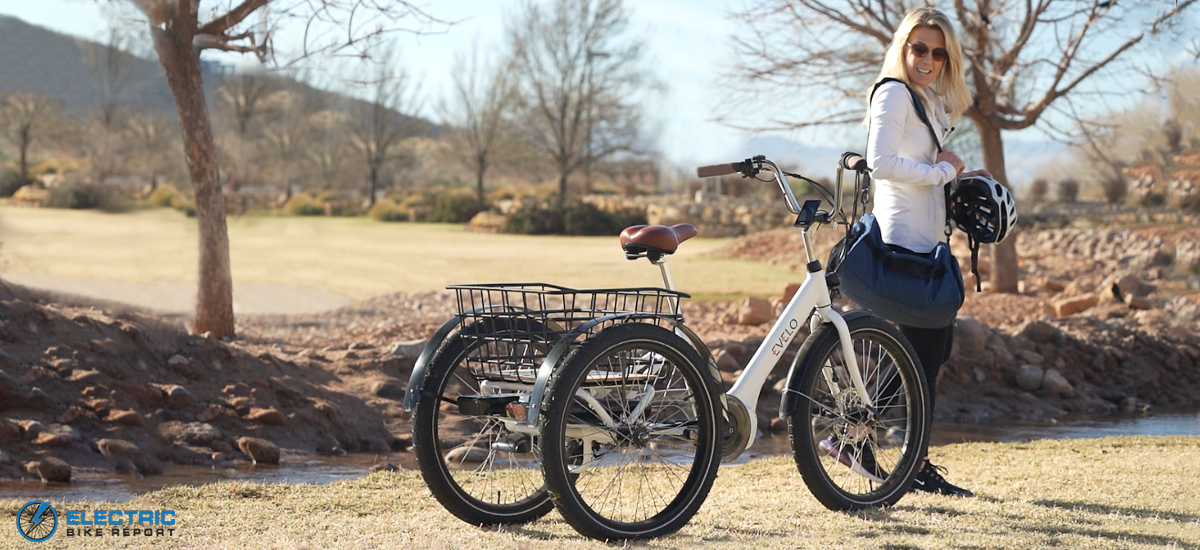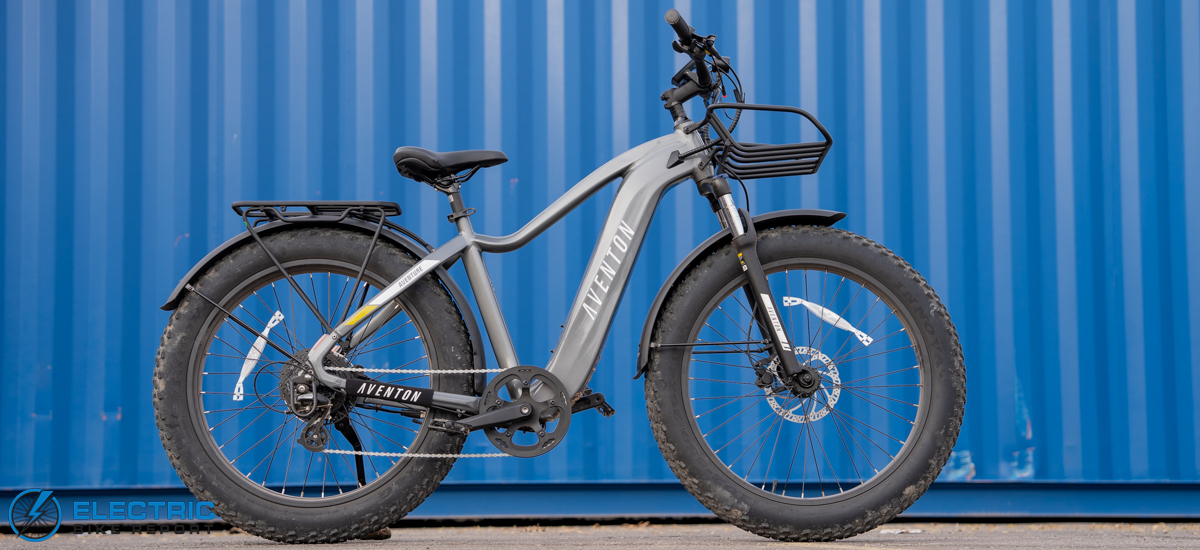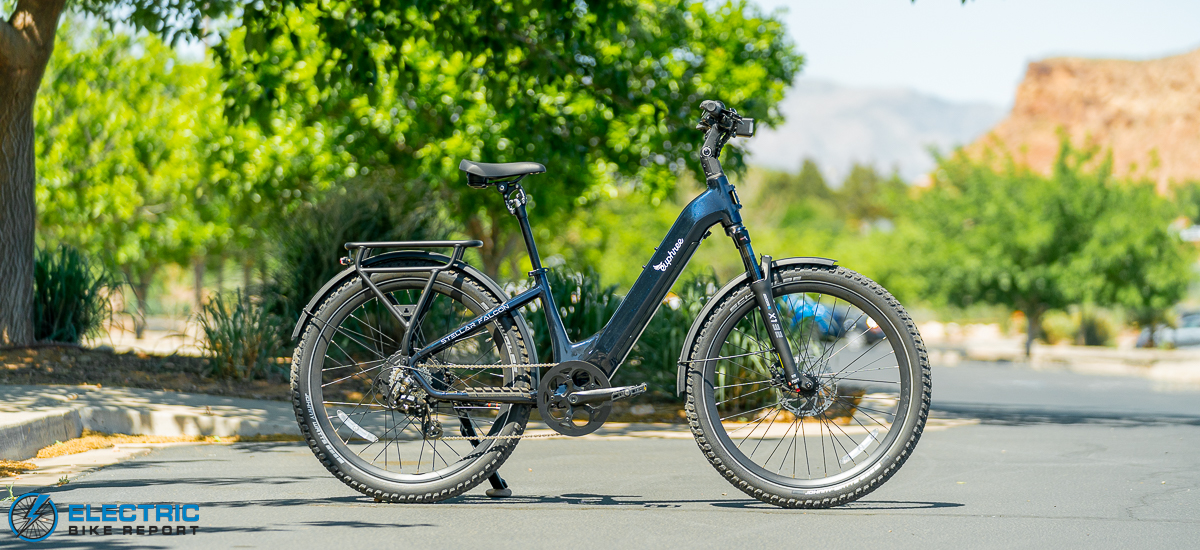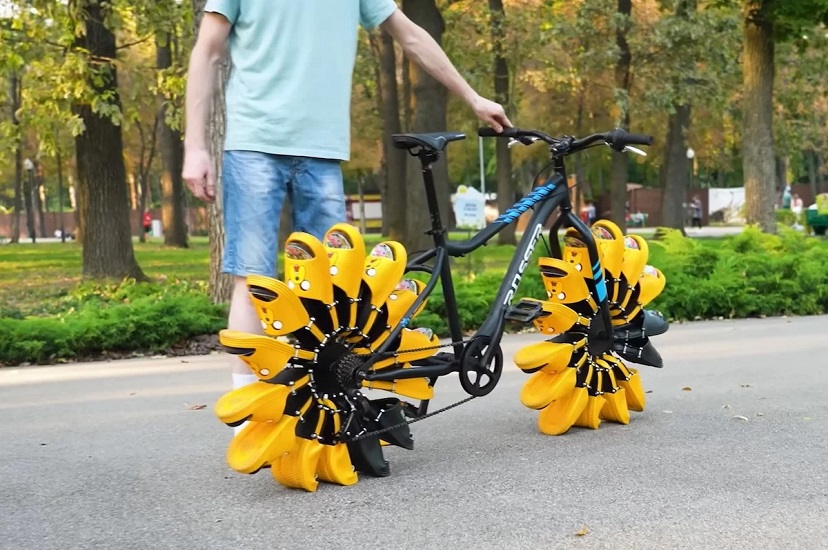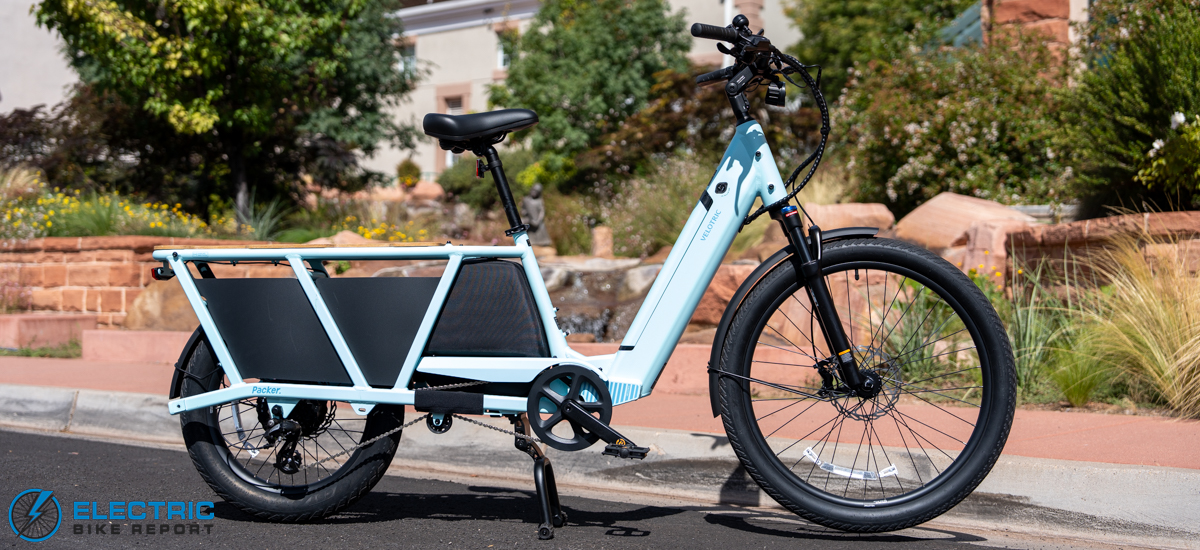
As explained in the graphic above, we tested the Packer 1’s hill climbing abilities separately using its throttle and its maximum pedal assist setting (PAS 5). We were impressed with the power of its 750W motor; its peak output is 1200W and 75 Newton-meters (Nm) of torque.
With its motor doing all of the heavy lifting, we measured a time of 1 minute and 15 seconds using the throttle. During this portion of the test, the Packer 1 traveled an average of 14.5 miles per hour. With added effort from our tester (Justin), we measured an expectedly faster time and speed; the bike traveled up the path in 1 minute and 9 seconds with an average of 15.7 miles per hour.
The motor’s maximum output equates to a significant amount of force, as is appropriate for an e-bike made to effectively move a lot of weight. Comparatively speaking, the Packer 1’s throttle-only time is on the mid-to-high end when considering the other cargo haulers we’ve tested. Its max-PAS time is comparatively slower, but well within the range of expected results. Cargo bikes tend to perform better than other categories of e-bikes, so average in this case is still better-than-average in the big picture.
We perform our Hill Tests with no additional cargo weight for the purposes of apples-to-apples comparison, but we understand that most riders won’t be doing much traveling without the weight of kids or groceries taxing the motor. To gain a more complete understanding of the Packer 1’s capabilities, we tested it both with and without cargo weight at a different “unofficial” test location closer to our office.
At that location – which we call the Pilot Hill – we measured a time and speed of 1:07 / 17.9 mph using the throttle and 1:04 / 18.7 mph when pedaling in PAS 5 with no added cargo weight. For the second portion of the test, we added a sandbag weighing 45-50 lbs to the optional large basket on the rear rack before trying again. With this cargo, we measured a time and speed of 1:24 / 14.3 mph using the throttle and 1:11 / 16.9 mph in PAS 5.
These additional tests showed a 20% reduction in throttle-only speed and roughly a 10% reduction in pedal assist speed with the additional 45-50 lbs. The added weight made more of a difference when relying solely on the motor’s power, but impacted the pedal assist test far less due to the human element involved.
Our formal test location is slightly more challenging than the Pilot Hill, but based on this test, we think it’s reasonable to say that the Packer 1 would have climbed Hell Hole with the same amount of cargo. Considering that the bike climbs best with help from its rider, we suggest pedaling when hauling extremely heavy loads, but with smaller hills or lighter loads, the Packer 1’s motor showed that it can do the job on its own.

